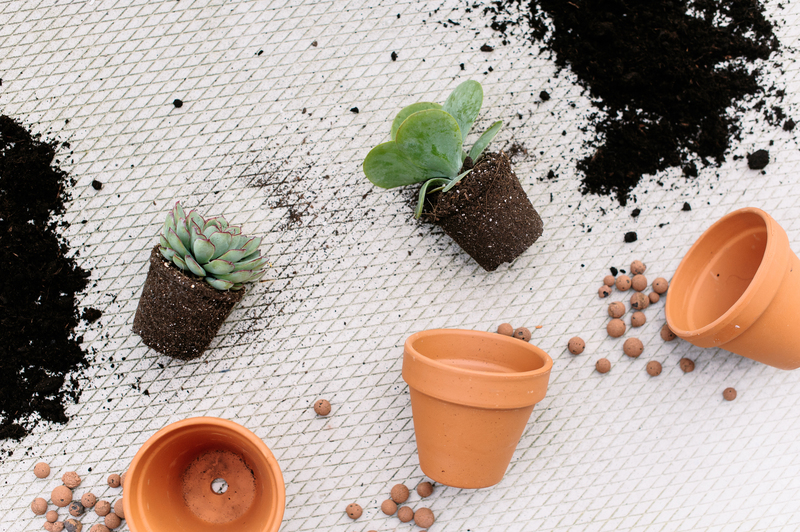Your Go-To Solution for Cleaning Mould on Window Sills
Posted on 30/05/2025
Your Go-To Solution for Cleaning Mould on Window Sills
If you've noticed unsightly black, green, or gray patches on your window sills, you're not alone. Mould on window sills is a common problem in many homes, especially in areas with high humidity or poor ventilation. Failing to address it not only affects your home's appearance but may also threaten your family's health and the structural integrity of your windows. Whether you're dealing with a stubborn spot or a widespread mould infestation, this comprehensive article is your go-to guide for cleaning mould from window sills efficiently and safely.
Why Does Mould Grow on Window Sills?
Understanding why mould develops on window sills helps you prevent it in the future. Here are the main reasons:
- Condensation: Windows are cooler surfaces in your home. When warm, moist air comes into contact with them, water droplets form and accumulate, creating perfect conditions for mould.
- Poor Ventilation: Without adequate air flow, moisture lingers around your windowsills for longer periods. Steam from cooking, bathing, or even breathing overnight can raise humidity indoors.
- Building Materials: Wooden sills are particularly vulnerable since they absorb moisture more readily than UPVC or metal alternatives.
- Leaky Windows: Defective caulking, seals, or drainage can let rain and moisture seep in, contributing to persistent dampness.

Health Risks of Mould on Window Frames and Sills
Mould isn't just an aesthetic problem. When it appears on your window sills, it can also pose a series of health risks, particularly for those with allergies, asthma, or weakened immune systems. Potential issues include:
- Respiratory problems: Breathing in tiny mould spores can trigger coughing, sneezing, or even serious asthma attacks.
- Irritation of eyes, nose, and throat: Prolonged exposure to mould can cause persistent discomfort.
- Infection risk: Certain mould varieties--such as black mould--produce mycotoxins that may cause more severe problems.
That's why it's important to act immediately when you notice mould on your window sills.
Tools and Products Needed for Mould Removal
Before you begin the window sill mould cleaning process, gather the following tools and supplies:
-
Personal protective equipment:
- Gloves (rubber or latex)
- Protective glasses
- Face mask (preferably N95 or similar)
- Cleaning solution: Choose from either commercial mould removers or a homemade remedy (such as diluted white vinegar or baking soda and water).
- Soft-bristle brush or old toothbrush
- Microfiber cloths or paper towels
- Spray bottle for application
- Plastic scraper (optional for stubborn stains)
- Sealant or caulking (if you need to re-seal window edges)
Step-by-Step Guide: The Best Way to Clean Mould from Window Sills
1. Safety First
Always protect yourself before tackling any mould cleaning on window sills. Wear gloves, glasses, and a mask to avoid skin contact or inhaling spores. Open windows to increase ventilation during cleaning and keep the area well-ventilated after.
2. Prepare the Window Area
Clear the window sill of objects, curtains, or blinds that may be in the way. Lay old towels on the floor to catch drips, and close doors to prevent spores from spreading throughout your home.
3. Choose the Right Cleaning Solution
You can opt for:
- Commercial mould removers: These products are specially formulated for removing mould from window frames and sills. Always follow manufacturer's directions.
- Homemade solution: Mix equal parts white vinegar and water in a spray bottle, or use a paste of baking soda and water for tougher patches. Both are effective and non-toxic.
Never mix bleach and ammonia--the fumes are highly toxic!
4. Remove Loose Mould Growth
Spray the affected area with your chosen solution and let it sit for 10-15 minutes. This helps to break down the mould, making it easier to scrub away.
- For light mould build-up, gently scrub with a soft brush or cloth.
- For stubborn mould stains, you may need to repeat the spraying and scrubbing process, or try a slightly more abrasive tool like a plastic scraper (never use metal, which can damage the sill).
5. Wipe Away and Rinse
Once the mould has been scrubbed off, wipe down the sill with a clean, damp cloth to remove any lingering cleaning solution. Then, dry thoroughly with a separate towel or paper towels--this is crucial to prevent mould regrowth.
6. Inspect for Damage and Reseal If Necessary
Extensive mould growth may indicate deeper moisture infiltration. Check for cracked caulking or peeling paint around your window sill. Repair and reseal as needed to stop future water from coming inside.
7. Dispose of Waste Properly
Put used cloths and towels in a sealed plastic bag to prevent spore spread, and wash your hands thoroughly after completing the job.
Natural vs. Chemical Mould Cleaners: Which is Better for Window Sills?
The debate between natural and chemical mould cleaning solutions is ongoing. Here's a quick comparison to help you decide which approach best suits your needs:
-
Natural Cleaners:
- Pros: Eco-friendly, non-toxic, safe around pets and children, biodegradable.
- Cons: May require more applications, less effective on severe or entrenched mould.
- Examples: White vinegar, baking soda, tea tree oil, hydrogen peroxide (3%).
-
Chemical Cleaners:
- Pros: Fast-acting, kills a wider range of bacteria and fungi, powerful stain removal.
- Cons: May emit harsh fumes, can be hazardous if not handled properly, not as eco-friendly.
- Examples: Commercial sprays, diluted bleach solutions (1 part bleach to 10 parts water; only use in well-ventilated areas with gloves and care).
In summary, natural solutions are ideal for regular maintenance and minor infestations, while chemical cleaners may be necessary for severe cases of mould on window sills.
Tips for Preventing Mould Regrowth on Window Sills
Once you've succeeded at cleaning window sill mould, the next step is prevention. Here are key strategies:
-
Increase ventilation:
- Open windows each day, even in winter, to let stale, humid air escape.
- Use extractor fans in bathrooms and kitchens.
- Consider a dehumidifier in persistently damp rooms.
-
Control condensation:
- Wipe down window sills and glass each morning, especially in colder months.
- Keep curtains open during daytime to allow sunlight (a natural mould inhibitor) to reach sills.
-
Improve insulation:
- Double-glazing, secondary glazing, or thermal film can help keep the internal glass surface warmer, reducing condensation.
-
Regular inspections:
- Check for leaks, cracked caulking, or peeling paint every few months and repair promptly.
- Use anti-mould paint or sealant in high-risk areas.
-
Mould-resistant window sills:
- Consider replacing severely damaged wooden sills with UPVC or composite materials that resist moisture.
Mould Removal on Different Types of Window Sills
Window sills come in various materials, each requiring a slightly different approach.
-
Wooden window sills:
More porous and prone to water damage. Avoid soaking them--use minimal liquid, dry promptly, and treat with wood preservatives if necessary. -
UPVC or plastic sills:
Less likely to suffer lasting damage, but still require thorough mould removal. Avoid abrasive pads that scratch the surface. -
Painted or sealed window sills:
Inspect for bubbling or peeling paint as a sign that moisture has penetrated the protective coating.
DIY Mould Cleaning vs. Professional Services
Most household mould on window sills can be safely handled with the above methods. However, you should consider hiring a professional mould remediation service if:
- The affected area is larger than 1 square metre.
- There's evidence of mould inside walls, insulation, or beyond window sills.
- You or your family members experience severe allergic symptoms.
- Home remedies have not worked or you suspect toxic black mould (Stachybotrys chartarum).
Professionals have industrial-strength solutions, protective equipment, and expertise to treat and prevent further contamination.

Frequently Asked Questions About Mould on Window Sills
-
Can I use bleach to clean mould off window sills?
Bleach can be effective on non-porous surfaces but is less so on wood. It may also cause discoloration and emits strong fumes. Vinegar is often safer and just as effective. -
Is mould on window sills dangerous?
Small amounts often aren't a health risk for most people, but consistent exposure or large patches may trigger or worsen health problems. Clean promptly and ventilate your home well. -
How often should I check for mould on my windowsills?
Inspect during your regular cleaning routine--at least monthly in winter or damp areas. Catching mould early is key to easy removal. -
Will repainting my window sill prevent mould?
Not entirely. Use anti-mould or mildew-resistant paint as an added safeguard, but address moisture and ventilation issues first.
Conclusion: Restore and Protect Your Window Sills
Mould on window sills doesn't have to be a recurring headache. With the right techniques and maintenance, you can banish existing mould and safeguard your home against future outbreaks. By following this comprehensive, step-by-step guide to cleaning mould on window sills, you ensure a healthy, attractive, and comfortable living environment for your family.
Still struggling or dealing with extensive mould? Don't hesitate to call in the professionals for peace of mind and long-lasting results. And always remember: prevention is better than cure!
For more expert tips on mould prevention, home cleaning, and window care, follow our blog and stay tuned for the latest advice.





